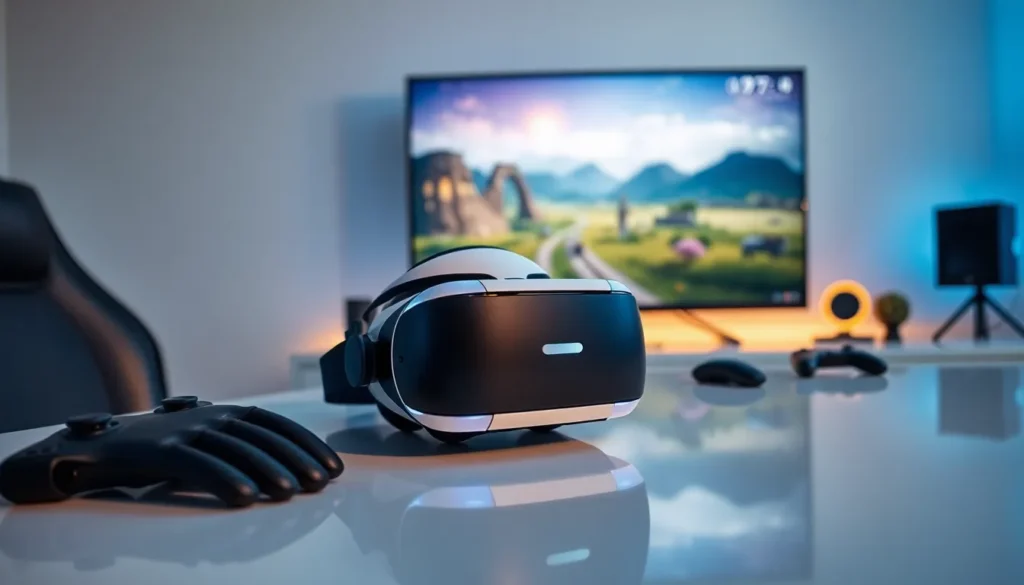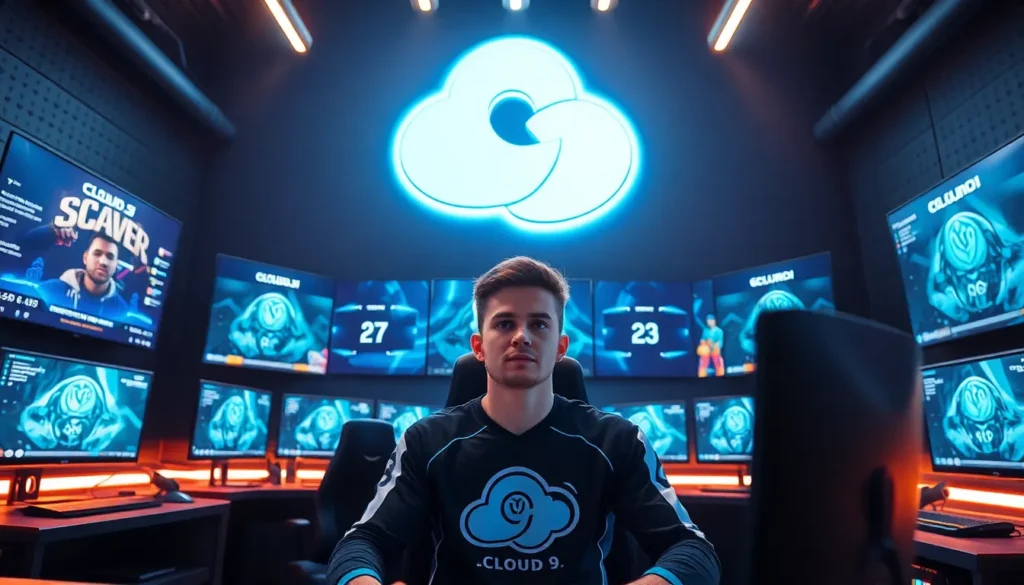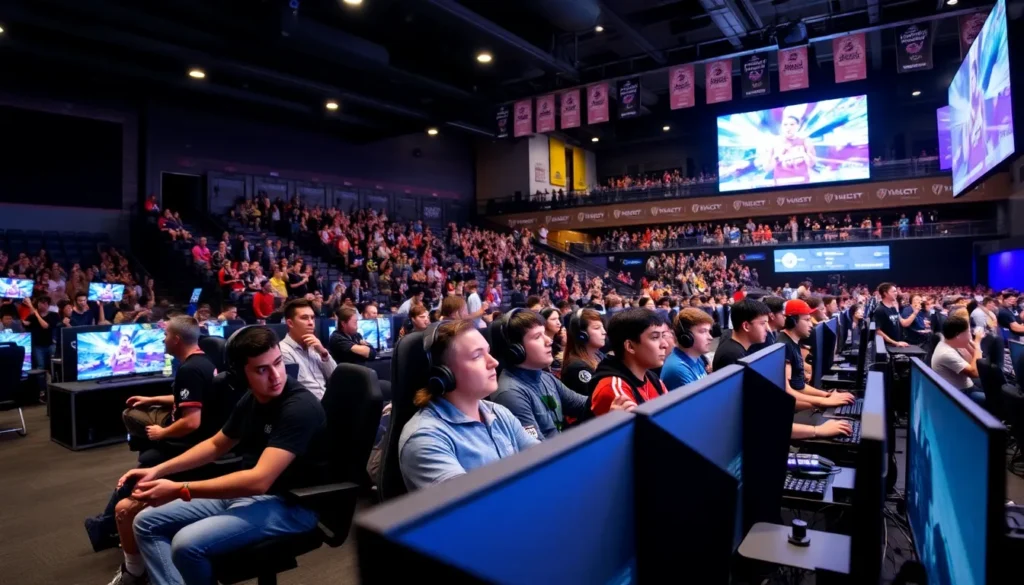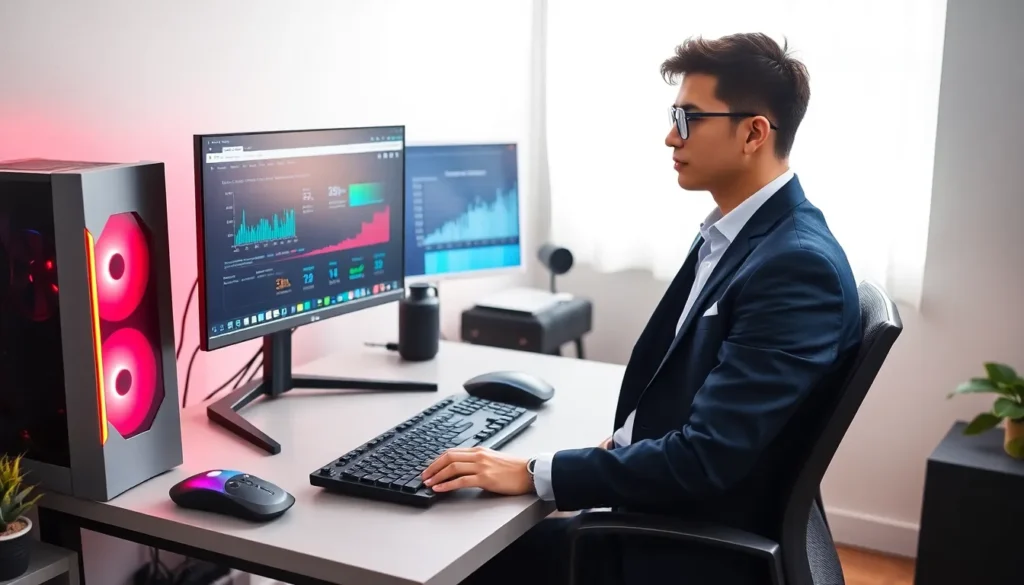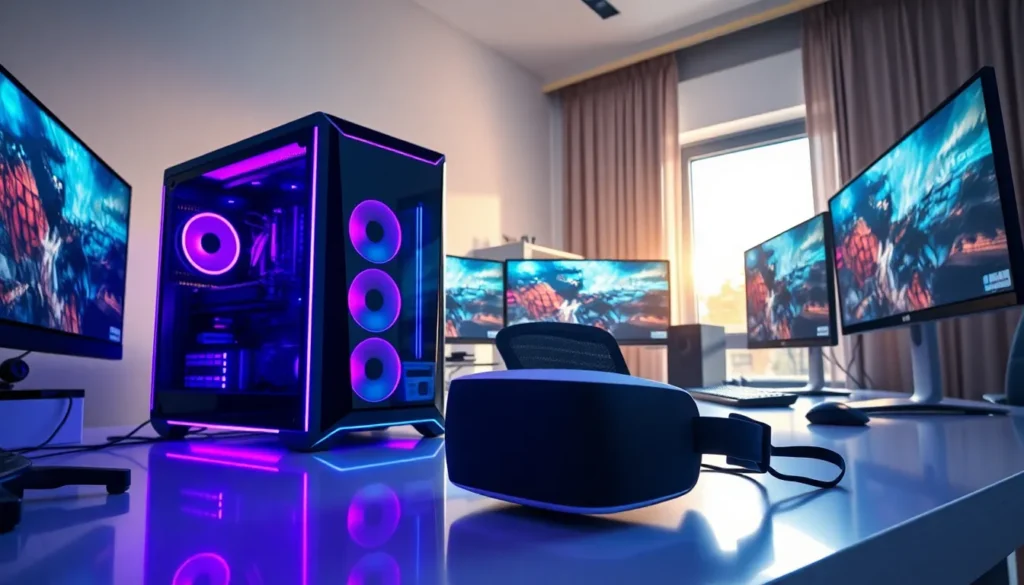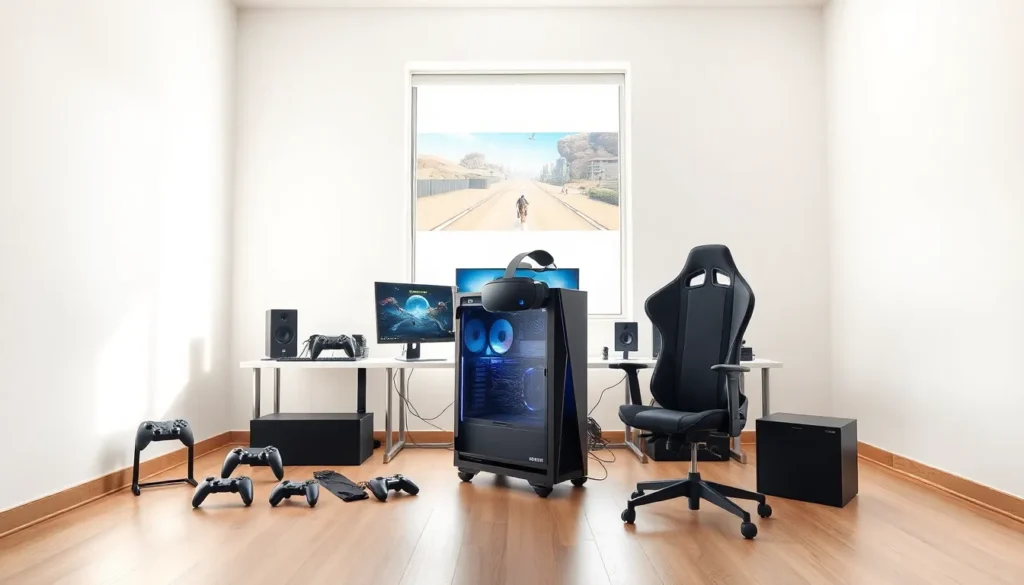Table of Contents
ToggleImagine slipping on a headset and being transported to a world where gravity is a suggestion and dragons are just a breath away. That’s the magic of VR gaming. But before diving headfirst into fantastical realms, what exactly does it take? If you’re here, you likely have an idea that a standard PC simply won’t cut it, right? Strap in as we unravel the essential components for creating a gaming rig that not only handles VR but turns your living room into an infinite universe.
Understanding VR Gaming Requirements
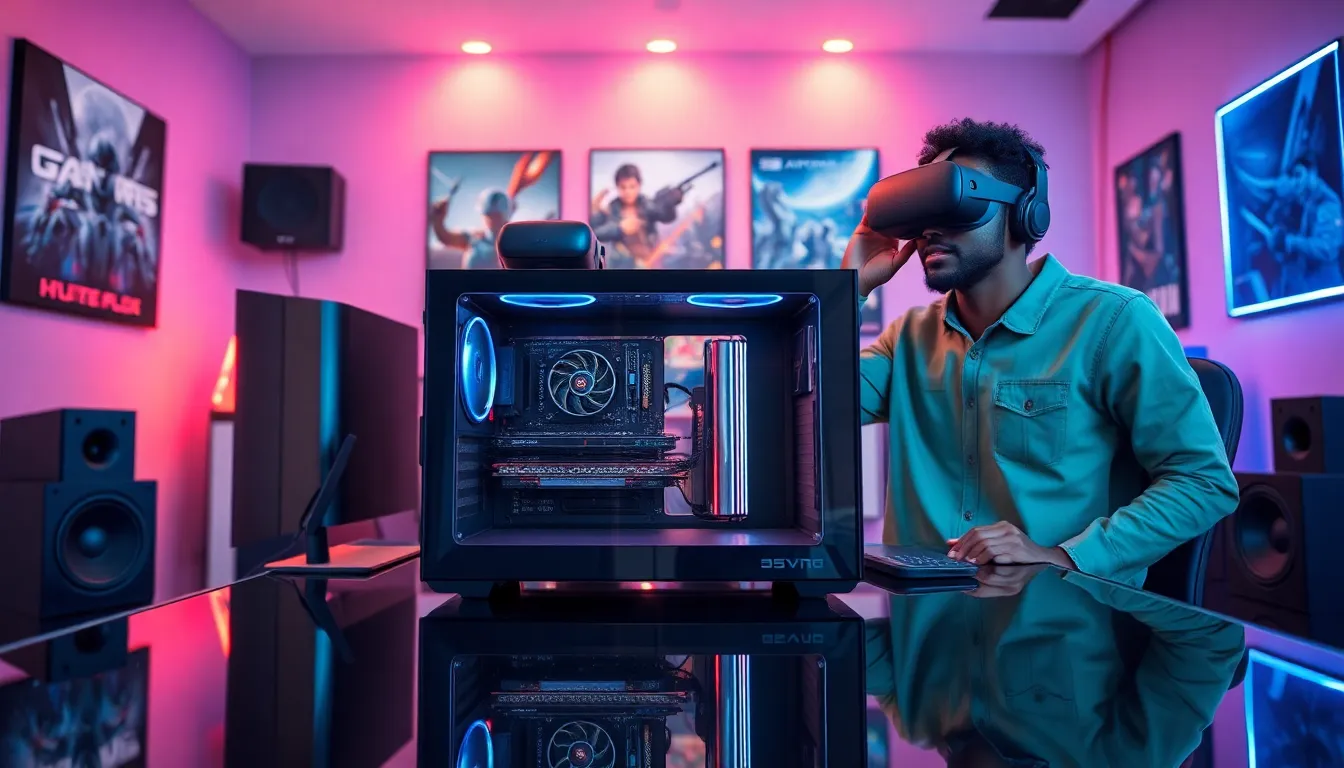
When it comes to VR gaming, understanding the requirements is half the battle won. It’s crucial to note that VR isn’t just about the visuals: it also involves smooth performance and immersive experiences. Essentially, a VR-ready PC must deliver at least 90 frames per second (FPS) for an enjoyable experience. Any less, and players may find themselves feeling nauseous, an experience no one wants to repeat.
Also, VR gaming demands systems that support low latency and high refresh rates. The technology can be resource-hungry, and that’s where powerful components come into play. VR platforms, like Oculus Rift or HTC Vive, will also specify minimum and recommended specifications, but aiming for the latter is always prudent.
Key Components of a VR-Ready PC
To build a robust VR gaming PC, several key components need to be in place:
Choosing the Right GPU for VR
The GPU, or graphics processing unit, is arguably the heart of your VR system. A top-tier GPU impacts not only frame rates but also the rendering of realistic environments. Options like the NVIDIA GeForce RTX 3060 or AMD Radeon RX 6800 are popular for high-fidelity visuals without hiccups. Remember, in VR, clarity is key.
Importance of CPU Performance
While the GPU may hog the spotlight, the CPU still plays an essential role in maintaining the overall performance. A processor like the AMD Ryzen 5 5600X or Intel i5-11600K will ensure that the GPU isn’t left waiting. This balance allows everything from physics calculations to AI processing to run smoothly, ensuring a slick VR experience.
RAM and Storage Considerations
Finally, don’t overlook RAM and storage. At least 16 GB of RAM is advisable for seamless multitasking and gameplay. As for storage, opting for an SSD over a traditional hard drive means faster load times and a generally snappier system. A 512 GB SSD provides ample space for your favorite titles and immersive experiences.
Setting Up Your VR Environment
Establishing the right environment for VR gaming is as crucial as the hardware.
Optimal Room Setup and Space Requirements
A dedicated space that’s free from obstruction is paramount for an immersive VR experience. Ideally, the play area should be at least 6.5 feet by 5 feet, allowing ample room for movement. Clear the space of furniture, pets, or anything that could lead to accidents. Lighting, too, plays a role: getting rid of glare and ensuring sufficient tracking for the headset is beneficial.
Essential Hardware Accessories for VR Gaming
Plus to the core components of your PC, several accessories can elevate your VR experience.
Choosing the Right VR Headset
Selecting a VR headset that aligns with your preferences and system is critical. Options like the Oculus Quest 2 or the Valve Index offer unique experiences but come with different price tags and features. Those seeking high-end experiences should consider factors such as resolution, refresh rate, and comfort.
Additional Peripherals to Enhance Experience
Don’t forget other peripherals. Things like motion controllers, VR gloves, or even treadmill alternatives can make your sessions feel more dynamic and engaging. Consider adding a good set of headphones for immersive audio as well, because let’s face it, eerie sounds behind you can really heighten the tension.
Future-Proofing Your VR Gaming PC
VR technology evolves rapidly, making future-proofing essential.
Upgradability and Component Compatibility
When building a VR gaming PC, consider components that allow for easy upgrades, like modular power supplies and standard motherboard formats. This means that when the next big GPU drops, you won’t need to rebuild the entire system to enjoy superior performance. A unit with expandable RAM slots can also extend the lifespan of your rig.
Keeping Up with VR Technology Trends
Staying updated with VR technology trends is vital for any serious gamer. As software developers continuously push the limits of what’s possible, new updates and hardware changes will emerge. Technologies like eye tracking, haptic suits, or even improved social experiences are becoming standard. Diving into forums, watching tech reviews, and engaging in the VR community can provide insights into the latest developments.

